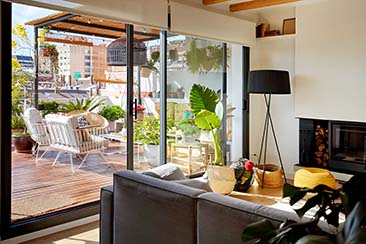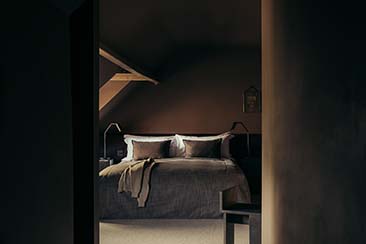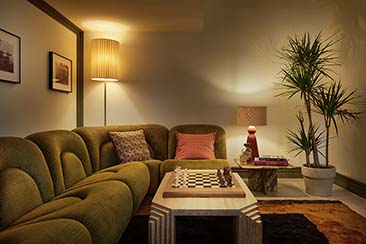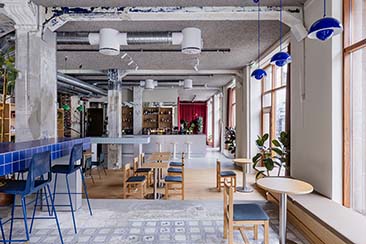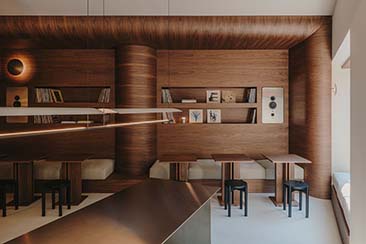Morning light pouring through sliding doors can change a living room instantly. When indoor and outdoor areas flow together, the boundary softens. That sense of connection doesn’t happen by chance, it comes from intentional choices in color, furniture, and the way each element is arranged throughout the home.
Creating seamless indoor-outdoor living doesn’t require a massive budget or perfect architecture. When selecting pieces that work in multiple environments, Shop Home Styles offers furniture and décor designed to transition between spaces—items that handle weather while maintaining interior aesthetics. The approach focuses on selecting materials, colors, and textures that feel cohesive rather than creating sharp divisions.
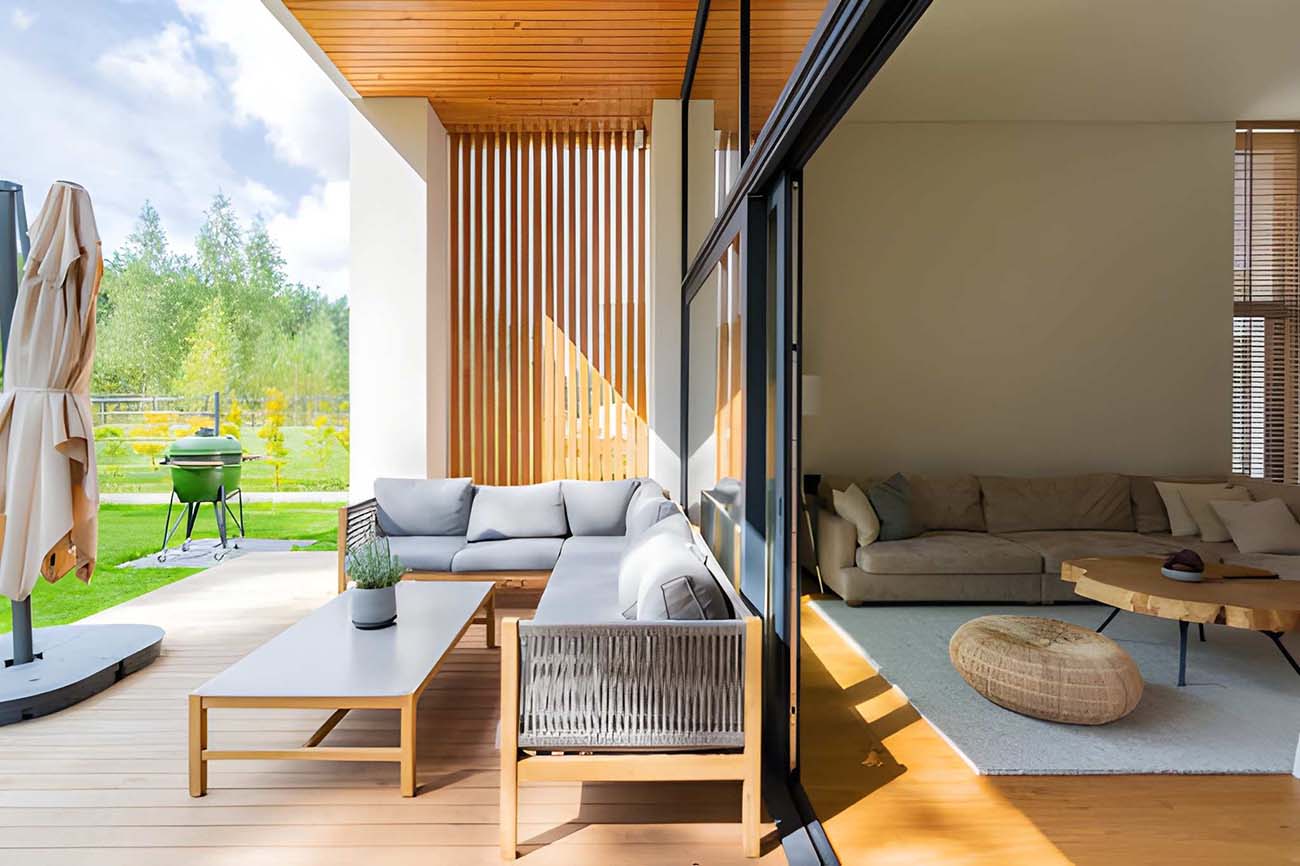
Connecting Spaces Through Color
Choosing Transitional Palettes
Some color schemes work anywhere: terracotta, sage green, warm cream, sandy beige, and natural wood unify indoor and outdoor spaces without creating visual barriers. These earthy neutrals don’t register as specifically indoor or outdoor shades. Building your palette around them eliminates the visual break between environments.
Match specific shades across your spaces intentionally. Sage cushions inside the mirror outdoor pillows in the same tone. Terracotta pots work on kitchen counters and balcony rails. When colors repeat, your eye travels smoothly without registering boundaries.
Accent colors can be bolder—burnt orange, dusty rose, deep teal—but consistency matters. The coral throw on your couch might have a twin on patio seating. Repetition creates cohesion more effectively than perfectly matched sets.
Working With Natural Light
Sheer curtains filter harsh sunlight while maintaining a visual connection to outdoor spaces. You see plant silhouettes and sky without sacrificing privacy. This diffused quality softens rooms naturally.
Preserve views on windows facing gardens or greenery. These become living artwork that changes with the seasons and weather. Save blackout treatments for bedrooms where darkness actually matters. Living areas benefit from maximum natural light.
Position furniture to maximize light exposure. A chair catching morning sun becomes a favorite reading spot. A desk facing balcony plants makes working from home less isolating.

Materials That Transition Seamlessly
Understanding Weather-Resistant Options
Modern outdoor living furniture rivals indoor pieces in both comfort and style. Weather-resistant doesn’t mean sacrificing aesthetics anymore. Powder-coated metals come in sophisticated colors like matte black, sage, and terracotta that work with contemporary interiors. Updated wicker offers clean lines and neutral tones far removed from traditional porch furniture.
Performance fabrics now include hundreds of patterns and colors. Many are indistinguishable from traditional textiles until you check care labels. These materials handle sun exposure and moisture while providing genuine comfort.
Look for UV-resistant finishes and rust-proof frames—these treatments keep outdoor furniture looking good for years instead of fading after one season.
Mixing Indoor and Outdoor Textures
Rattan chairs work exceptionally well across environments. Lightweight enough to move easily, weather-resistant enough to leave outside, aesthetically neutral enough to fit various rooms. Use them in bedrooms, living areas, or balconies, depending on season and need.
Bring outdoor textures inside deliberately. Jute rugs, woven baskets, and natural fiber textiles add warmth to interiors while handling outdoor conditions. The reverse matters too. Soft blankets and plush cushions transform outdoor seating on cooler evenings.
Mix materials freely. Wicker beside velvet creates an interesting contrast—linen cushions on metal chairs. Wood tables paired with upholstered seating. Your space should look collected over time, not purchased from a single display.
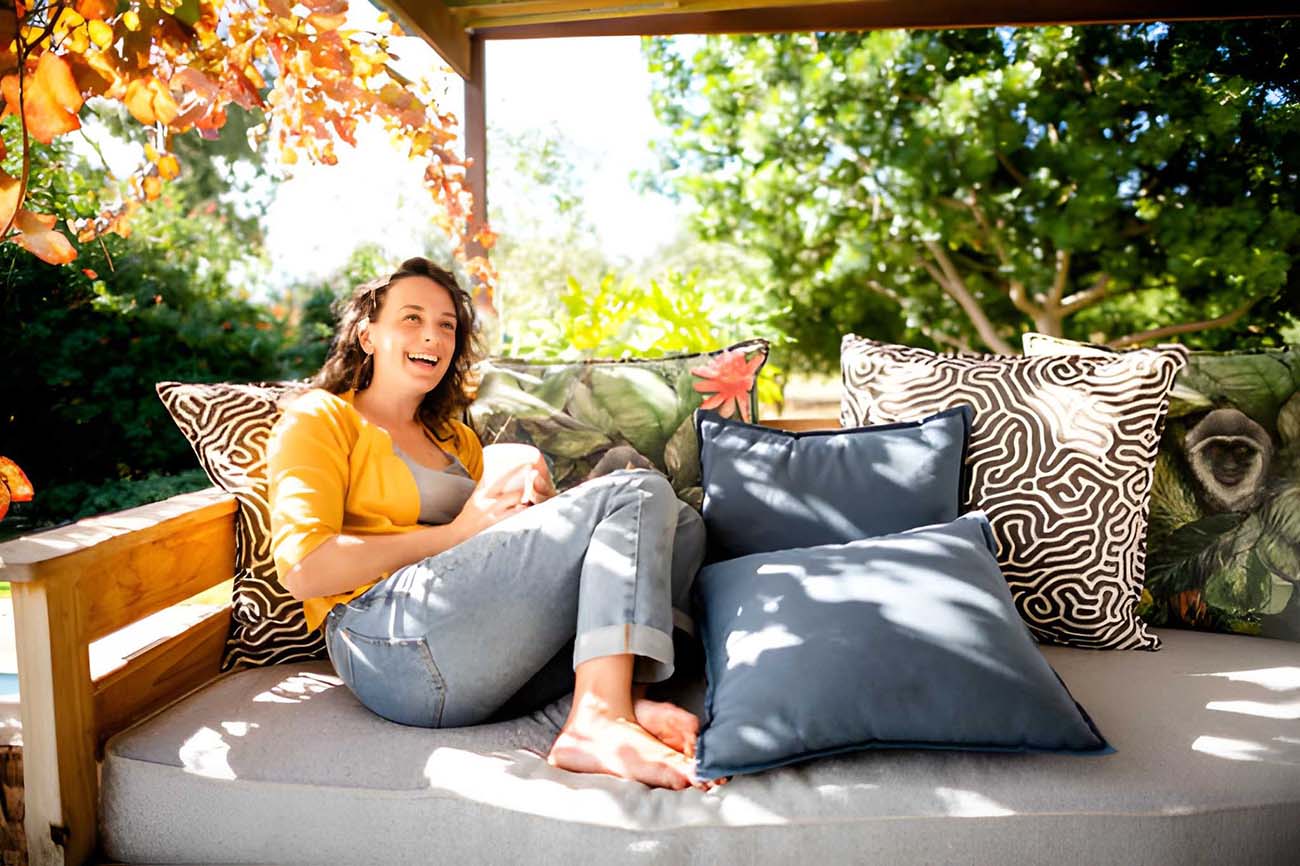
Flexible Furniture Solutions
Multi-Purpose Tables
Coffee tables and side tables shouldn’t stay permanently in one location. Lightweight designs move easily when you want to reconfigure. That side table holding books inside works equally well outside for drinks during gatherings.
Nesting tables offer particular versatility. Stack them when you need floor space. Separate them across multiple areas when hosting. Use one outside and two inside, rotating as needed.
Choose materials that handle both environments. Sealed wood, powder-coated metal, and treated rattan all transition well. Avoid delicate finishes that water or sun would damage.
Seating That Moves
Investment pieces should work in multiple locations. Modern outdoor chairs often look stunning inside. Metal frames in sophisticated colors suit contemporary interiors while handling weather exposure.
Folding furniture saves space in tight areas. Wall-mounted fold-down tables create surface space that disappears when not needed. Bistro sets designed for small footprints allow seating without overwhelming the available area.
Measure before buying. Furniture that fits on paper might feel too large in reality, particularly on small balconies or compact patios.
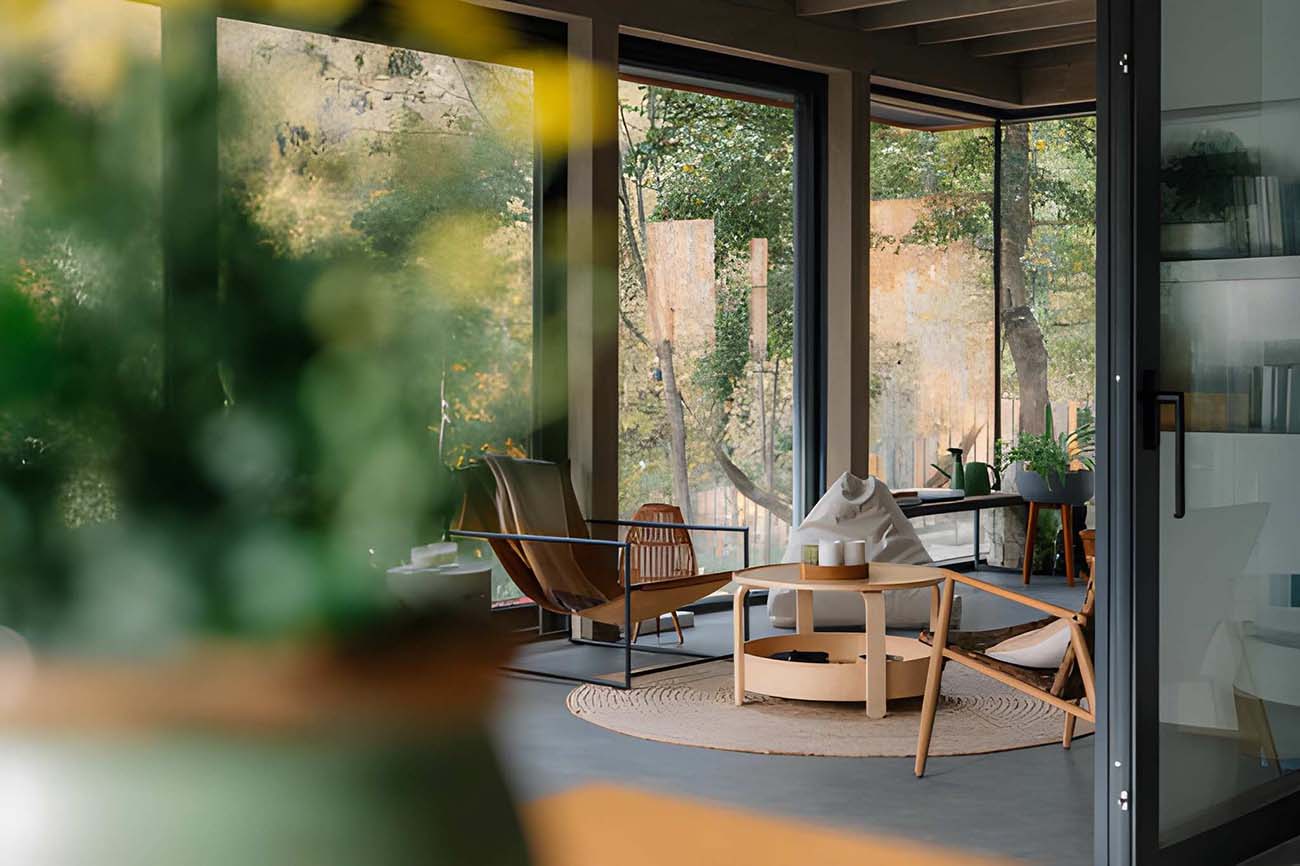
Bringing Nature Inside
Low-Maintenance Plant Options
Not everyone is a natural gardener, but plants instantly connect a space to nature. Start with easy varieties—pothos grow almost anywhere, snake plants tolerate weeks without water, and succulents manage inconsistent care. Mix heights for interest. From one bold fiddle leaf fig to clusters of small pothos. Most importantly, match plants to real light conditions to avoid disappointment and wasted money.
Natural Materials as Décor
Collected items from nature add character that purchased décor can’t replicate. Driftwood becomes sculptural art. Smooth stones arrange beautifully on shelves. Dried flowers and pampas grass last for months. Nature walks turn into décor shopping when you start noticing what could work in your space.
This appeals to anyone who loves DIY and creative expression. Your space becomes genuinely unique because nobody else has found that exact branch or rock.
Creating Atmosphere
Lighting Strategies
String lights add instant warmth and charm to any space. Hang them on balconies, weave through indoor plants, drape above headboards. Battery-powered or solar options eliminate outlet requirements. Warm glow works for daily living and creates a gathering ambiance.
Lanterns offer similar versatility. Use LED candles inside for safety, real candles outside where ventilation isn’t a concern—group multiple sizes for visual interest. Flickering light creates an atmosphere that overhead fixtures can’t match.
Install dimmers on overhead lighting. Adjustable brightness shifts from task lighting during the day to ambient light for evenings. This flexibility costs little but affects comfort significantly.
Textile Choices
Performance fabrics designed for outdoor use now look identical to indoor textiles. These materials handle moisture and sun exposure while providing comfort. Cushions rated for outdoor use work perfectly on beds or indoor seating.
Create cozy spaces everywhere. A daybed outside needs the same comfort level as one inside. The goal is to extend your actual living space into the open air rather than treating outdoor furniture like camping gear.
Mix patterns and textures freely. Striped outdoor pillows beside solid indoor cushions. Geometric prints with natural textures. Your aesthetic should feel cohesive without everything matching exactly.
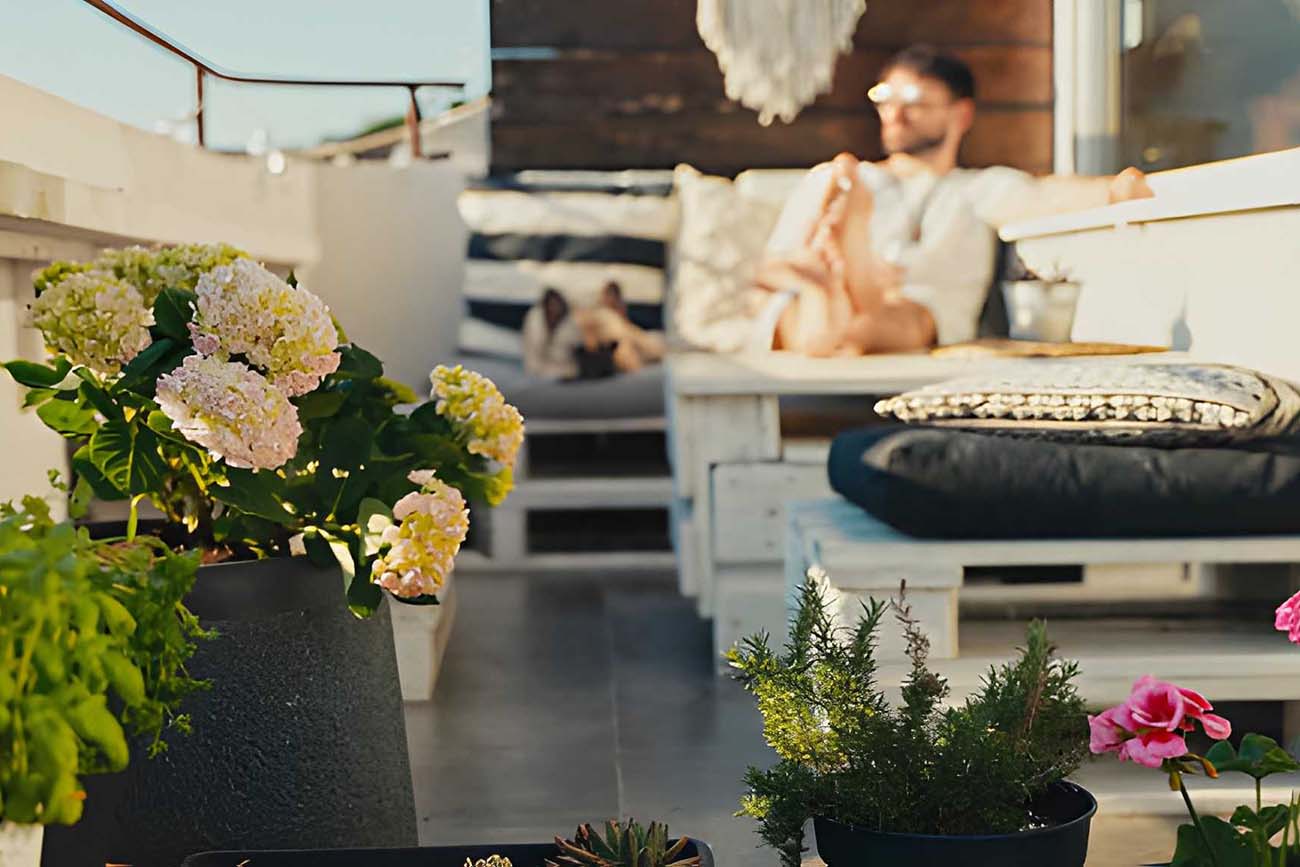
Small Space Solutions
Maximizing Limited Square Footage
Vertical gardens on walls or railings add greenery without consuming floor space. Hanging planters work from ceiling hooks or over-rail attachments. This approach maximizes what you can grow in a minimal area.
Mirrors or reflective surfaces visually expand cramped spaces. Position a mirror to reflect plants, and small balconies appear twice as lush. This works inside too—mirrors bouncing natural light deeper into rooms make spaces feel larger.
Choose dual-purpose items. Storage ottomans provide seating and organization. Benches with lift-up seats hide gardening supplies. Every piece should earn its place through multiple functions.
Conclusion
Connected indoor-outdoor living creates spaces that feel larger and more inspiring than walls alone allow. The approach doesn’t require perfection or unlimited budgets.
Small intentional choices build the feeling you’re after. Matching colors across spaces. Bringing natural textures inside. Positioning furniture to maximize light and views. These elements combine to create a seamless flow.
Start with one aspect that appeals most to you. A plant bringing life to a corner. Weather-resistant cushions that work anywhere. String lights add warmth. Build gradually as you discover what works for your situation and preferences rather than trying to transform everything at once.

